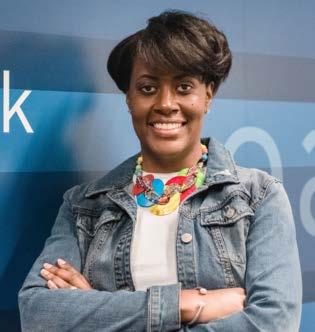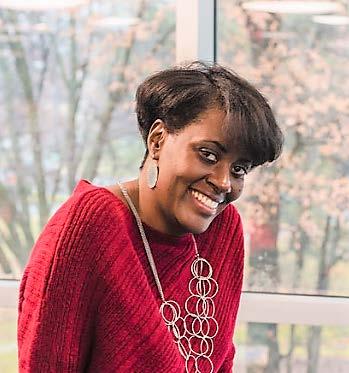
3 minute read
TONYA ROBERTSON
DR. TONYA ROBERTSON
Advertisement
Q. Thanks for interviewing with us. Please tell everyone who you are and what you do?
A. Hi, my name is Dr. Tonya Robertson and I am the Founder & CEO of Focused Training Solutions. In my company, we curate instructional learning tools designed to optimize employee performance in the workplace.
Q. How did you get into learning & Development strategist?
A. I’ve always been actively involved in the field of education and technology in various capacities from a kid all the way to college. As I transitioned into creating my own business, I did so with the employee voice in mind. Growing up, I always felt like I did not have a voice. That baggage went with me into all of my workspaces and kept me from speaking up, advocating for myself, and sharing my workplace learning needs. As a result, I was overlooked and often undervalued. So, my plight has been to put the learner’s needs first in all development considerations, but in a fun and effective way.
Q. You have developed a multimillion-dollar training for the government, how has that journey been?
A. In addition to serving businesses, we also serve the government. As a government contracting agency, my business has obtained new partnerships and has been afforded the opportunity to be involved with learning and development projects on a much larger scale. It’s been an awesome experience thus far. We look forward to additional awards, partnerships, and ways by which we can be impactful in our community.
Q. I see you have been doing Instructional Design for more than 20 years. How did you build that successful customer base?
A. Always producing quality work, sharing information with others often, being reliable, admitting if I made a mistake, and giving a little extra to my customers has allowed me to be successful.
Q. What are the three reasons why adding new skills is important for your business?
A. 1. It will add more value to your business. 2. It will keep your business relevant 3. It will boost your employees’ work productivity, empowerment, and engagement.
Q. What are some of your most favorite accomplishments?
A. Being the first in my family to obtain a doctorate degree and overcoming the labels, statistics, and negativity spoken over my life as a 16-year old pregnant African American church girl. This makes me proud as a mom because I always want to model what is possible. I understand that they will choose different paths, but I always want them to understand the laws of abundance and understand that they can be, do, and have ANYTHING! I will always remind them to never accept the limitations of others as their own.
Q. Can you tell us what your
design process is?
A. Once we have a general idea of the learner’s needs, we design with gaming concepts in mind first. The intent is to really come in on developing meaningful interactions that incorporate storytelling, choices, consequences, and feedback. Most importantly, though, is the learner’s needs. Employee voices matter and we take special care to make sure we delicately design learning tools to meet their needs.
Q. Tell us what your favorite theories are regarding Instructional Design?
A. It’s a tie between the Active Learning Theory and the Constructivist Learning Theory. I’m a firm believer that we all analyze, rationalize, synthesize, and develop new ideas or refurbish old ideas through our filtered experiences. However, I also believe that we learn best by doing. Our creation considerations always bridge between these two theories.


Q. Does your design address different learning abilities?
A. Absolutely! There is no way around this. This is the most gratifying component of design for me...understanding that we are all different and that we do things differently. Designing for different learning styles helps us understand how to tailor a pedagogical approach for the varying abilities of the learners. On the other hand, it is one of the most under-recognized areas in most workplaces. Learning and design in the workplace, more often than not, is typically handled as a one size fits all situation. This is usually the case because the organization benefits from cost savings when learning activities are designed in a streamlined manner.
Q. Where can the readers follow you?
A. People can connect with me by visiting my website focusedtrainingsolutions.com as well as following me on Facebook.”










